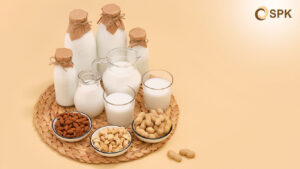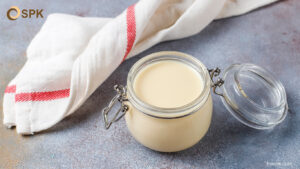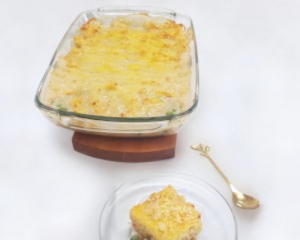What is Lebaran?
Lebaran, or Eid al-Fitr, is one of the most significant religious celebrations in Islam, marking the end of the holy month of Ramadan. For Indonesia’s Muslim-majority population, Lebaran is not just a time of spiritual reflection but also an opportunity to strengthen family bonds through festive gatherings and traditional culinary delights.
The term Lebaran does not originate from Arabic but is believed to have roots in Javanese culture. Historian M.A. Salmun (1954) suggests that Lebaran comes from the Hindu term meaning “finished” or “completed,” referring to the conclusion of fasting. This term was widely adopted by early Islamic missionaries, particularly the Wali Songo (Nine Saints), who sought to make Islamic traditions more familiar to Indonesia’s Hindu-Buddhist population.
Historical records indicate that the first large-scale Lebaran celebrations were introduced in the 15th century by Sunan Bonang, one of the Wali Songo. Over time, the term Lebaran became ingrained in Indonesian culture and is now widely used to describe the Eid festivities.
Traditional Foods of Lebaran
Indonesian Lebaran celebrations are incomplete without a spread of delicious traditional dishes. Two of the most iconic are ketupat (rice cakes wrapped in woven palm leaves) and opor ayam (chicken braised in coconut milk).
Ketupat, which symbolizes humility and forgiveness, was first popularized by Sunan Kalijaga in the 15th and 16th centuries as part of Bakda Lebaran and Bakda Kupat traditions. These customs, which involved preparing and sharing ketupat with neighbors, played a vital role in fostering communal harmony and gratitude. This tradition is implemented not only in Java Island but also across Indonesia and neighbouring countries like Malaysia, Singapura, and Brunei Darussalam1.
Opor ayam, on the other hand, is believed to have originated from Indian and Malay influences, particularly the use of coconut milk to create a rich and creamy texture. By the 15th century, as Islam spread across Java, opor ayam became a staple of Islamic Javanese cuisine, distinguishing it from the spicier dishes of Hindu-influenced culinary traditions.
Coconut Milk in Lebaran Cuisine
Coconut milk (santan) has long been a cornerstone of Indonesian cooking, particularly in Lebaran dishes such as curries (26 types), stews (18 types), and rice cakes (18 types)2. The practice of using coconut milk dates back to at least the 15th century when it was introduced into Islamic Javanese cuisine. Coconut milk provides a creamy texture and enhances the richness of many traditional dishes while also balancing the heat of Indonesian spices.
Indonesia, alongside India and the Philippines, ranks among the world’s largest coconut producers, collectively supplying 70% of the global market. With an annual per capita consumption of 6.5-8.2 kg of coconut milk, Indonesia falls within the moderate consumption category, similar to Thailand, while countries like Sri Lanka and Western Samoa lead with 30-36 kg per capita3.
The Shift to Creamer: A Modern Alternative to Coconut Milk
As lifestyles evolve, cooking methods have become more efficient, reducing the need for time-intensive preparations. Traditionally, making coconut milk involves grating fresh coconut and extracting the liquid manually—a process that could take hours. Today, modern alternatives such as non-dairy creamer (NDC) provide a practical and long-lasting substitute for coconut milk in Lebaran cuisine.
The Origins of Creamer
Non-dairy creamer was first developed in the United States in the early 20th century as a milk substitute. Originally intended for coffee and beverages, its versatility quickly expanded to baking and cooking applications. Due to its long shelf life, affordability, and ease of use, creamer has a became popular ingredient in food preparation worldwide.
Why Use Creamer Instead of Coconut Milk?
The use of creamer in Indonesian cooking has grown due to several key advantages:
- ✅ Longer Shelf Life: Unlike fresh coconut milk, which spoils quickly, creamer can be stored for extended periods, making it ideal for bulk purchasing.
- ✅ Cost-Effective: Creamer is often more economical than fresh coconut milk, reducing overall cooking expenses.
- ✅ Consistent Creamy Texture: Creamer provides a rich, smooth consistency that enhances the mouthfeel of traditional dishes.
- ✅ Versatile in Cooking and Baking: From savory dishes like opor ayam to sweet treats like kue nastar (pineapple tarts), creamer seamlessly replaces coconut milk without altering taste or texture.
How to Use Creamer in Lebaran Dishes
- Opor Ayam & Other Coconut-Based Curries: Traditionally made with coconut milk, these dishes can be prepared using creamer, resulting in a rich and velvety sauce with no significant difference in taste.
- Lebaran Pastries: Creamer works exceptionally well in traditional Indonesian cookies like kastengel (cheese sticks), kue semprit (butter cookies), and putri salju (snowball cookies), enhancing their flavor while improving shelf stability.
- Rice-Based Dishes: Creamer can also be used in desserts like kolak (sweet coconut-based banana stew) or bubur sumsum (coconut rice porridge), offering the same creamy consistency as coconut milk.
Conclusion
Lebaran is a time of celebration, tradition, and culinary indulgence. While coconut milk has been a staple in Indonesian cuisine for centuries, creamer presents a modern, efficient, and cost-effective alternative for both home cooks and commercial food producers. With its ability to replicate the creamy texture of coconut milk, extend shelf life, and reduce preparation time, creamer is an excellent choice for those looking to streamline their cooking process without compromising on flavor.
As Indonesian cuisine continues to evolve, embracing innovative substitutes like creamer ensures that traditional dishes remain accessible, delicious, and adaptable to modern lifestyles. Whether you’re preparing a rich opor ayam or baking festive cookies, creamer is a versatile solution for enhancing Lebaran cuisine in today’s fast-paced world.
Referensi:
- Ranti A, Novenia AE, Christopher A, Lestari D, Parassih EK. Ketupat as traditional food of Indonesian culture. J Ethn Foods. 2018;5:4–9.
- Prastowo, I., Moro, H.K.E.P., Nurusman, A.A. et al. Diversity of Indonesian Lebaran dishes: from history to recent business perspectives. J. Ethn. Food 11, 42 (2024). https://doi.org/10.1186/s42779-024-00257-z
- Suyitno T., Health Benefit of Coconut Milk. https://doi.org/10.22146/jifnp.102













